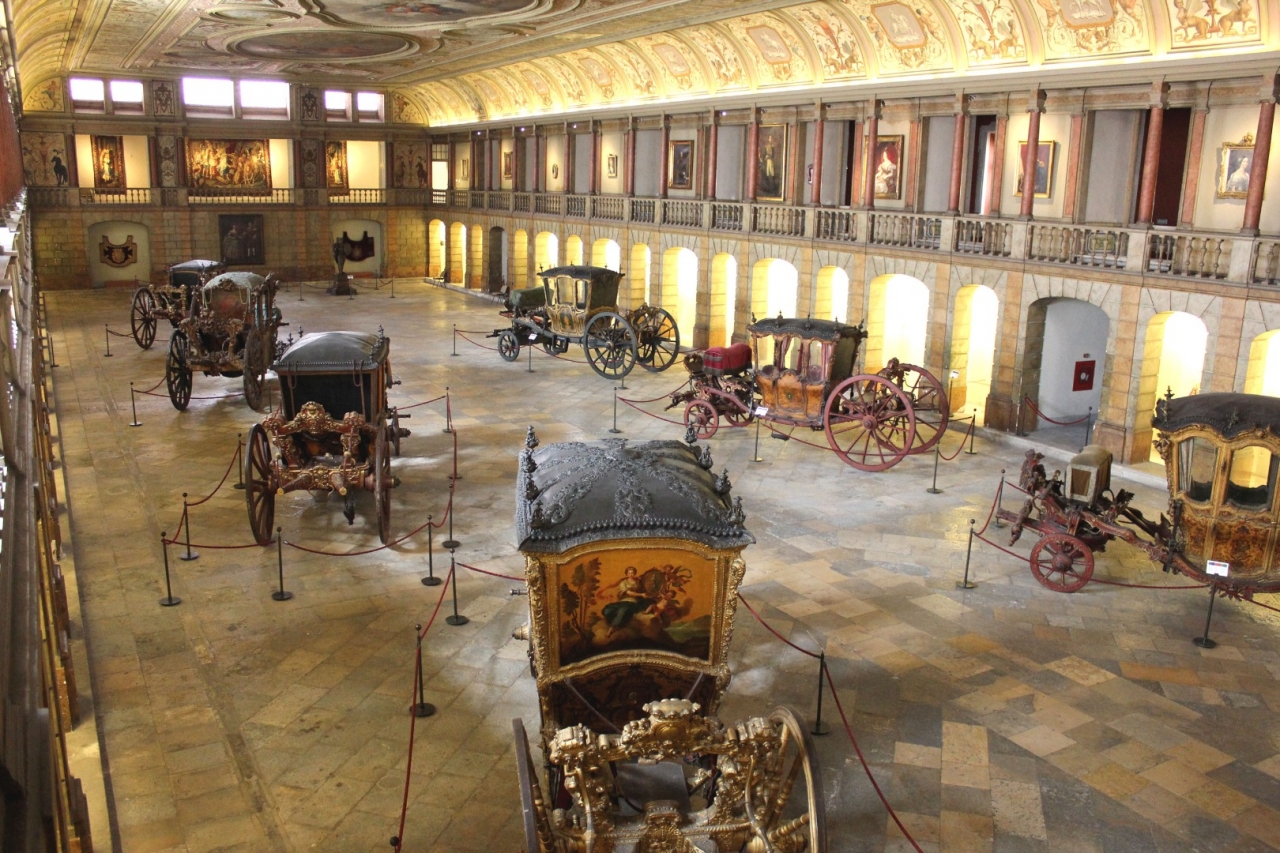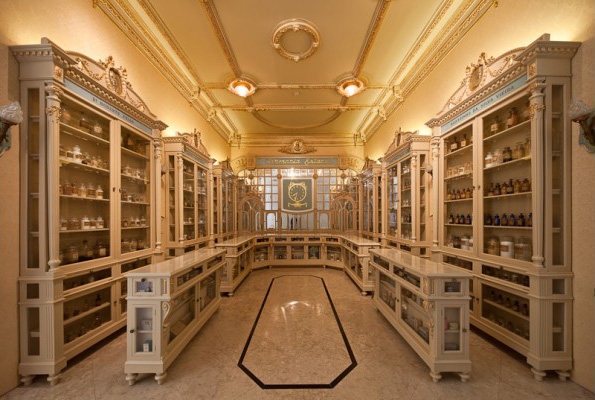Just as you shouldn’t judge a book by its cover, don’t judge Lisbon’s museums
by their names. The capital is full of attractive and enriching museums, most of them are probably on your “things to visit in the capital” to do list. However, many of them are often overlooked and underrated. Based on their names and themes, you might not think of adding these museums to your list of things to see in Lisbon - but you should - and here’s why.
Electricity Museum
Along the waterfront in the Belém neighborhood, just near the district’s train station, you’ll find the Electricity Museum. This big factory looking building is also a cultural centre, a science museum, a Museum of Industrial Archaeology and a space for contemporary art exhibitions. It presents the evolution of energy in the thermoelectric plant, known as the Tejo Power Station, which operated until 1951 and was responsible for illuminating Lisbon for more than four decades. Inside the Electricity Museum, you’ll be able to visit the coal square, the exhibition room, the boiler room, the ash room, the experimentation room, the water room, the condenser room, the generator room and the control room. You’ll learn how the thermal power station functioned and what the work environment was like during its peak time. The museum also explains the new energy generating systems and how they could be maintained in the future. It’s a great educational place to bring children so they can learn about energy sources, and the most important scientists in the history of electricity. The museum first opened in 1990 - and again in 2006 after undergoing renovations - but the building itself is often the main attraction. In 2016, the museum became a part of the Museum of Art, Architecture and Technology (MAAT) which is the very futuristic looking building right beside the former power station. I recommend visiting these museums later in the evening so you can stay until sunset, getting an amazing view of the city and the Tagus River. It is easily accessible from Lisbon by bus or train and is open from 10am to 6pm, from Tuesday to Sunday. Tickets are available online at https://www.maat.pt/pt/bilhetes.
Coachs Museum
You would think that the most visited museum of Lisbon would be the Azulejo or Fado Museum but turns out, it is the Coachs Museum. The goal of the Museu Nacional dos Coches is to “guarantee the research and conservation of its collections”. More than a museum, the project is an urban infrastructure, which offers ‘public space’ to the city. The museum is housed in the Royal Riding Hall of Belém, the former home of the Portuguese School of Equestrian Art. It is part of the larger Belém Palace complex, formerly a Royal Palace which is now the official residence of the President of Portugal. The museum was created in 1905 by Queen Amélia, to house an extensive collection of carriages belonging to the Portuguese royal family and nobility. The collection presents the evolution of carriages from the late 16th century to the 19th century, with carriages made in Italy, Portugal, France, Spain, Austria and England. Among its rarest items is a travelling coach used by King Philip II of Portugal (Philip III of Spain) to come from Spain to Portugal in 1619. There are also several baroque 18th century carriages decorated with paintings and impressive woodwork, the most remarkable being the ceremonial coach given by Pope Clement XI to King John V in 1715. A part of the museum is also located in the Ducal Palace of Vila Viçosa, in Southern Portugal. You can get to the Coaches Museum from Lisbon by train, bus, or tram 15. It is open from Tuesday to Sunday, from 10am to 5pm.
Water Museum
Hidden underground, the Príncipe Real garden, you can find the Patriarchal Reservoir. Enabling water supply to Lisboetas, it was one of the first tanks of the distribution network, designed in 1856 by French engineer Louis-Charles Mary. Visitors can discover the historical, technological and scientific heritage of the city’s water, from Roman times to présent day. The museum’s permanent exhibition raises questions related to history, science, technology and sustainability, inviting guests to explore themes like water on planet Earth, the history of Lisbon’s water supply, the hydrological cycle, the urban water cycle, water pollution and the water footprint. It also explains the connection between the different buildings and areas that all together make up the Water Museum, such as the Águas Livres Aqueduct and the subterranean galleries, the Mãe d’Água das Amoreiras Reservoir, the Patriarchal Reservoir and the Barbadinhos Steam Pumping Station. The Águas Livres Aqueduct which is 58 kilometers long and consists of 14 arches, has been classified a national monument. It is open from Tuesday to Friday, from 10am to 5:30pm and on Saturdays and Sundays from 10am to 5:30pm. The Mãe d’Água das Amoreiras Reservoir is open from Tuesday to Friday, from 10am to 4pm and on Saturdays and Sundays from 10am to 2pm. Currently, it is being used for the 360 immersive art show “Impressive Monet and Brilliant Klimt”. Sessions start at 2:30pm and last until 7:30pm on weekends. You can visit the Barbadinhos Steam Pumping Station from Monday to Friday, by appointment, between 10am and 12:30pm and from 1:30pm to 4:30pm.
Money Museum
Behind the famous Praça do Comércio, and Lisbon’s City Hall, is where you’ll find the Money Museum. Located in the former São Julião church from the 1800s, this museum talks about the history and evolution of money in Portugal and throughout the world. It has a variety of thematic rooms such as pre-monetary currency, money throughout the world and its history over the centuries, banknote and coin production, Banco de Portugal and its main tasks, and the role of money in everyday citizen life. This is an interactive museum, where you’re encouraged to touch some of the exhibits. You can share your testimony, virtually mint a coin or print a banknote bearing your profile and face, or look through a microscope to see the fibres that make up banknotes. Open since 2016, the Money Museum also offers cultural and educational programmes for all ages. The Museu do Dinheiro was even awarded Portugal’s Best Museum of 2017 by the Portuguese Museology Association. Entry is free and open from Wednesday to Sunday, from 10am to 6pm (last admission 5:30pm).
Communications Museum
Lisbon’s Museu das Comunicações is one of the city’s most recent museums, exposing how the Portuguese have communicated between each other over the last five centuries. Here you can learn how each system of communication worked in the museum’s permanent exhibition, and visit the “house of the future” exhibit where you can imagine how we will communicate in the future. Here, children can learn how we used to communicate before we had smartphones, wifi and information at the tips of our fingers, just clicks away. In addition to these exhibitions, you can also visit the museum’s library and cafeteria. They also host other events, such as concerts, plays and conferences. The museum is located near the Santos train station and the Time Out Market. It is open from Tuesday to Friday from 10am to 6pm and on Saturdays from 2pm to 6pm. Tickets range from 2 to 10 euros and you can get a 50% discount with the Lisboa Card.
Pharmacy Museum
Now climb up the hill from the Communications Museum until you reach the Bairro Alto district and you’ll find the Pharmacy Museum. This highly attractive and unusual museum teaches you about the history of health through 5000 years. Open since June 1996, the museum resulted from Portuguese pharmacies wanting to preserve the history of their profession. Its vast collection includes objects of rare anthropological and scientific value, where we learn how each civilisation overcame diseases and sought different healing and pain relieving methods, from the first traces of life on earth until today, passing through cultures and civilisations in Greece, Rome, Africa, Tibet, China, Japan, etc. The museum also evokes the future of health with portable pharmacies and first aid kits used by NASA astronauts aboard the Space Shuttle Endeavour. It is open from Tuesday to Friday from 10am to 6pm and on Saturdays from 10am to 1pm, then 2pm to 6pm. Tickets range from 4 to 16 euros and the Lisboa Card gets you a 20% discount. I also recommend visiting this museum in the afternoon so you can sip a “paracetamol” cocktail afterwards in the Pharmacia restaurant by chef Susana Felicidade. Here you’ll find a whole pharmacy themed menu, but don’t worry, their appetizers don’t taste like medicine despite their names. Bonus point, their terrace faces the Santa Catarina viewpoint so stick around for the sunset with a glass of “morphine” in your hand.











